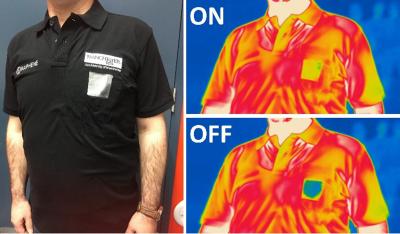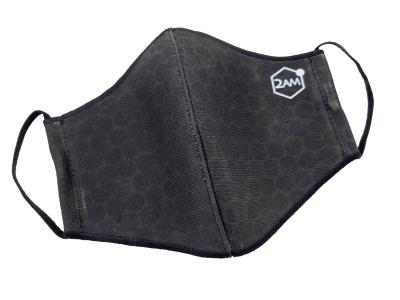The Graphene-Info newsletter, June 2020
Published: Thu, 07/02/20
Alé releases the Velocity G+ graphene-enhanced cycling jersey
Alé Cycling recently released a graphene-enhanced cycling shirt called the Velocity G+ jersey. The new jersey sells for around £230 and uses a graphene-based fabric that Alé claims “allows an active interaction between the body and the fabric.”
Alé says that this new G+ fabric is “able to effectively equalize body temperature, creating the ideal microclimate to keep cyclists comfortable even in the most unpleasant weather conditions”. Alé says that the Graphene “is used to strengthen the membrane and allows the fabrics to work with the body to regulate the heat produced.”
Graphene-enhanced asphalt to be tested in Dartford, UK
Highways contractor Amey and its client Kent County Council will be testing Gipave, an Italian graphene-based asphalt supermodifier said to extend pavement life. The trial is taking place as part of the Association of Directors of Environment, Economy, Planning & Transport (ADEPT) Smart Places Live Labs programme funded by the Department for Transport of the UK.
The trial involves resurfacing a 350-meter stretch of East Hill in Dartford with Gipave asphalt, alongside a similar stretch with regular asphalt. Work takes place from 25th June to 2nd July. The surfaces will then be monitored.
Gipave is a polymeric supermodifier containing graphene and a selected type of hard plastic. It has been used in trials of asphalt resurfacing at many sites in Italy including a number of roads and airport runways. Gipave, developed by Iterchimica, is the result of a three-year research program in collaboration with Directa Plus, G.Eco and the University of Milano Bicocca. The graphene used in the new supermodifier is produced by Italy-based Directa Plus.
Graphene-enhanced smart textiles developed for heat adaptive clothing
New research at the University of Manchester's National Graphene Institute focuses on graphene-enhanced smart adaptive clothing which can lower the body temperature of the wearer in hot climates.
The team of scientists has created a prototype garment to demonstrate dynamic thermal radiation control within a piece of clothing by utilizing the remarkable thermal properties and flexibility of graphene. The development also opens the door to new applications such as, interactive infrared displays and covert infrared communication on textiles.
Nanograf's CEO sheds light on the company's latest graphene battery materials, progress and future plans
NanoGraf Technologies is a U.S-based battery material startup formerly known as SiNode Systems, established in 2012 to commercialize a novel graphene-enhanced silicon-based anode tech for lithium-ion batteries originally conceived at Northwestern University.
In light of the rising interest in graphene-enhanced batteries, and Nanograf's advances in this field, Graphene-Info was glad to exchange a few words with Dr. Francis Wang, Nanograf's CEO, to get a better image of the company's tech and future plans.
planarTECH IDEATI graphene mask: hands-on review
planarTECH recently launched its 2AM graphene-enhanced face masks, in collaboration with IDEATI. The company (which has recently completed its successful crowdfunding financing round in our Graphene Crowdfunding Arena) was kind enough to send us a few samples of the masks for a short hands-on review.
The face mask has a design that uses unique graphene and other carbon nanomaterials coatings that take advantage of graphene's antibacterial and antistatic properties. The coating has been certified by the Thailand Textile Institute to reduce staphylococcus aureus (ATCC 6538) bacteria by 99.95% within a 24 hour period, and it also repels dust. The mask is washable and reusable (up to 10 times). Click here to read our impressions of these masks after testing them daily.
Materials Informatics: A Key Enabling Technology to Advance Nanomaterials R&D
This is a sponsored post by IDTechEx
Materials Informatics is the key to enabling a paradigm shift in our approach to materials science R&D. Significant investment, notable adoption from key end-users, and technology leaps make it evident that its time has come. Through primary-interview based analysis, IDTechEx has introduced the most comprehensive market report on the topic: “Materials Informatics 2020-2030”.
What Is Materials Informatics? Materials Informatics (MI) is the use of data-centric approaches for the advancement of materials science. This can take numerous forms and influence all parts of R&D (hypothesis – data handling & acquisition – data analysis – knowledge extraction).
Primarily, MI is based on using data infrastructures and leveraging machine learning solutions for the design of new materials, discovery of materials for a given application, or optimisation of how they are processed. To get more information and read the full article, click here.
A team of Brown University researchers has found a way to double the toughness of a ceramic material used to make solid-state lithium ion batteries.
Collaborative research between Flinders University's Institute for NanoScale Science and Technology and the Centre for Health Technologies at the University of Technology Sydney has used VFD technology to enable the preparation of a new generation of aggregation-induced emission dye (AIE) luminogens using graphene oxide (GO).
U.S-based motorcycle maker Indian Motorcycle has launched a new graphene-based technology Called ClimaCommand Classic Seat, which aims to deliver both heating and cooling to riders and passengers.
Researchers at Iowa State University and Northwestern University have developed graphene sensors that are printed with high-resolution aerosol jet printers on a flexible polymer film and tuned to test for histamine, an allergen and indicator of spoiled fish and meat.
Researchers at Delft University of Technology (TU Delft) recently presented what they say is the first mechanically-tunable monolayer graphene QD whose electronic properties can be modified by in-plane nanometer displacements.
Scientists from the Center for Photonics and 2D Materials of the Moscow Institute of Physics and Technology (MIPT), the University of Oviedo, Donostia International Physics Center, and CIC nanoGUNE have proposed a new way to study the properties of individual organic molecules and nanolayers of molecules.
Researchers at the University of Sussex have developed an ultra-sensitive graphene-enhanced sensor that can stretch up to 80 times higher strain than strain gauges currently on the market and shows resistance changes 100 times higher than the most sensitive materials in research development.
A team led by researchers at Carnegie Mellon University which also included researchers from the University of Chicago, the University of Pittsburgh and the University of North Carolina has created a new technology that enhances scientists' ability to communicate with neural cells using light.
The Swedish graphene manufacturer 2D fab has announced that its new industrial-sized volume production plant has opened.
Paragraf has entered into a working partnership with the Magnetic Measurement section at CERN, the European Organization for Nuclear Research, to demonstrate how new opportunities for magnetic measurements are opened up through the unique properties of its graphene sensor, particularly its negligible planar Hall effect.
A team of researchers from Nanyang Technological University, University of Chemistry and Technology Prague, and the King Saud University have 3D printed graphene-based electrodes capable of detecting mycotoxin zearalenone (aka ZEA, poisonous secondary metabolites) in food.
Indian Institute of Technology Mandi research team, in collaboration with researchers from Yogi Vemana University, has designed a novel graphene-based photocatalyst that can remove pollutants from water while simultaneously generating hydrogen using sunlight.
A team of researchers at Princeton has looked for the origins of the unusual behavior known as magic-angle twisted bilayer graphene, and detected signatures of a cascade of energy transitions that could help explain how superconductivity arises in this material.
Do you have a friend or a colleague that might be interested in Graphene technology? Forward this mail to update him on the world of Graphene.
If you received this email from a friend, subscribe to this newsletter here!




